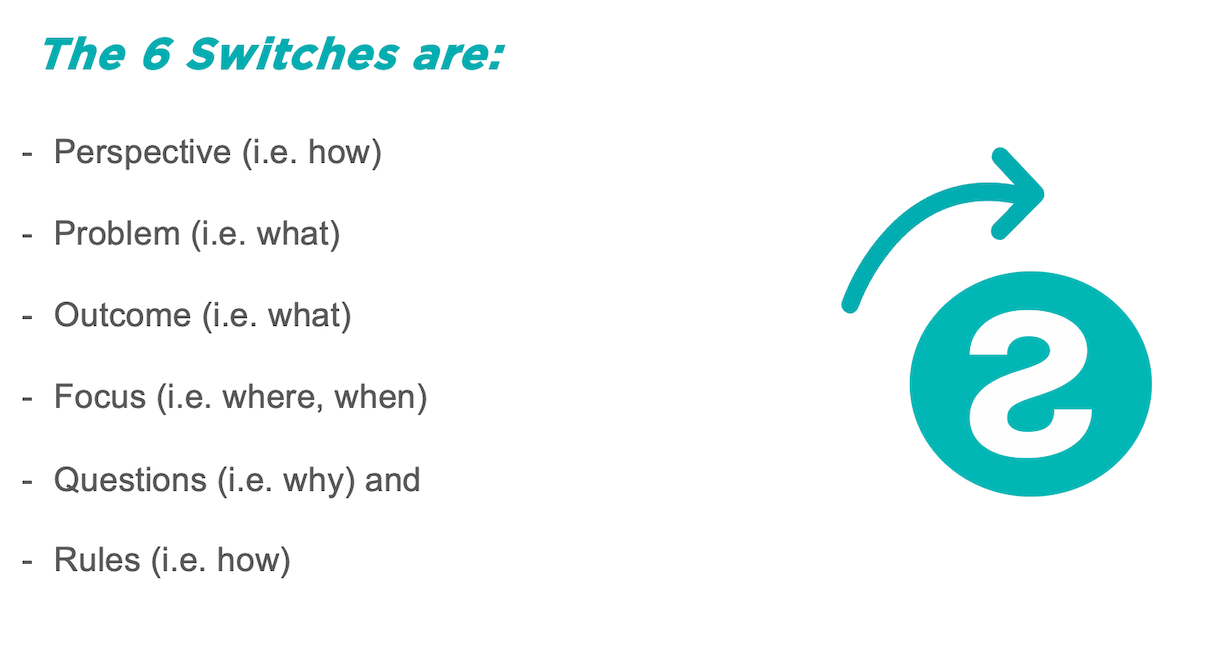There are 6 Switches in the Switch Thinking Tool kit.
These are:
– Perspective – how you look at a situation, problem or challenge
– Problem – what is the challenge, opportunity or situation?
– Outcome – what are the goals, results, desired experiences? etc
– Focus – where are you placing your attention and for how long?
– Questions – as the name implies the questions you are asking about the situation or challenge at hand
– Rules – these are the (often) unstated assumptions, beliefs or conventions that everyone seems to be following e.g. my assumption has always been that we need to sell this product for under $10.
Some guidelines in using the 6 Switches:
There is no right or wrong switch to use.
The role of a switch is to help you (and others) switch from your usual to a different pattern of thinking.
So it does not matter which way you do this.
You can use the switches in any order.
There is no right or wrong number of switches to use. If you use one switch and it helps you to generate a new idea or solve a problem that is all you need. Job done!
I have found that by using one switch you tend to change all the switches.
For example, you could select the perspective switch and adopt a customer or user lens which might unlock some new insights.
And it often encourages you to re-look at the starting problem. Should this be switched?
I have designed a Switch Thinking Canvas which has all the 6 Switches but you do not need to use this if you do not need to.
In a 5 minute interaction with a colleague if they are stuck for example you could use any of the switches to help them get unstuck e.g. It seems like you have designed a solution that works for us but what about one that benefits others? (i.e. a win – win which is a switch in outcome).
The switches are simple, easy and give you a semi-structured way to unlock your creativity and the amazing ideas of your colleagues.

